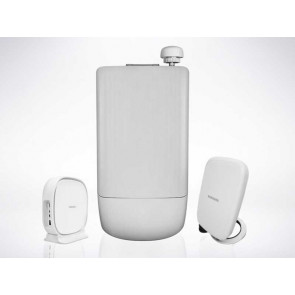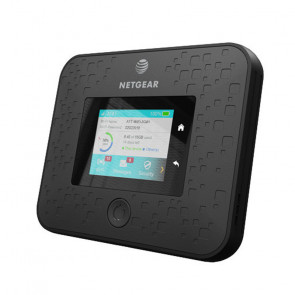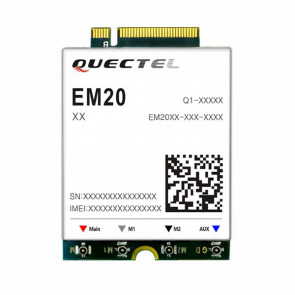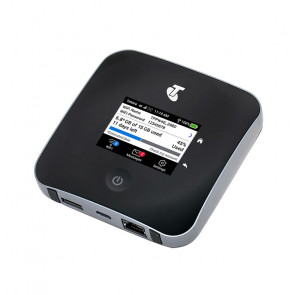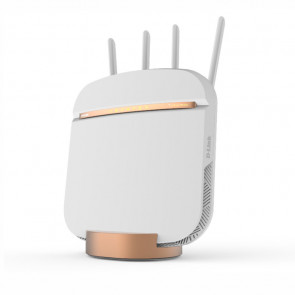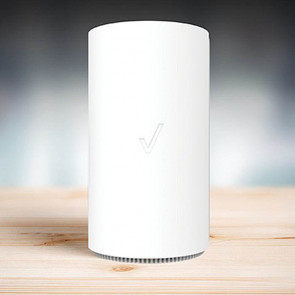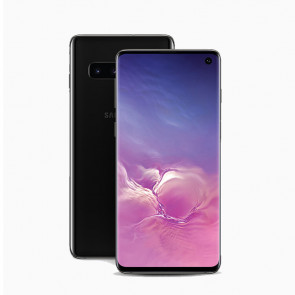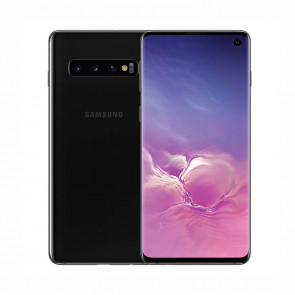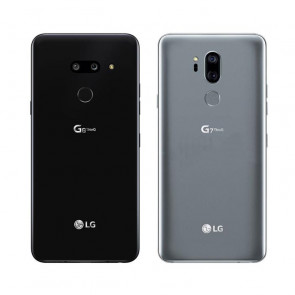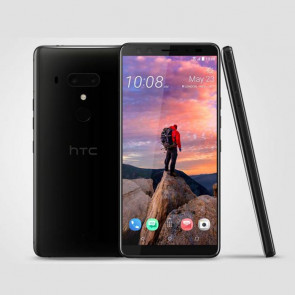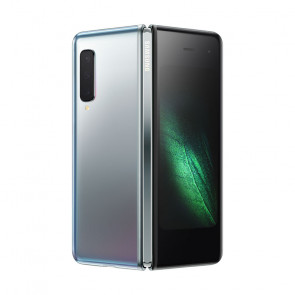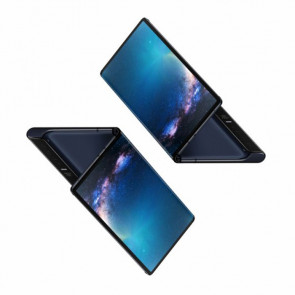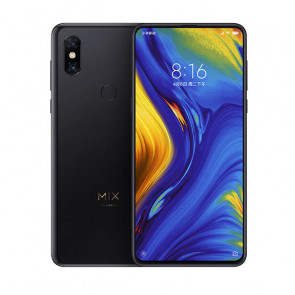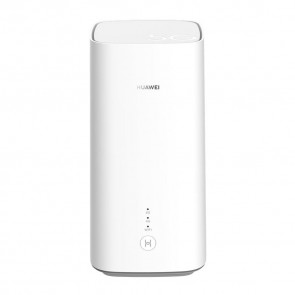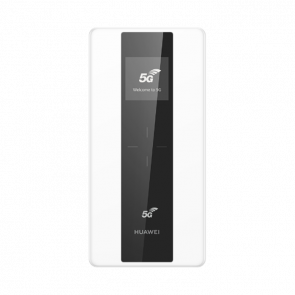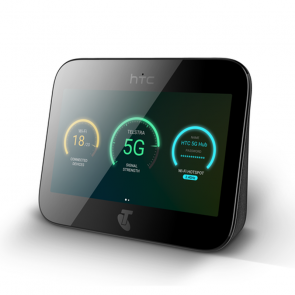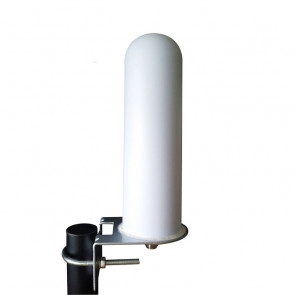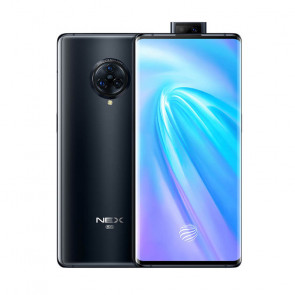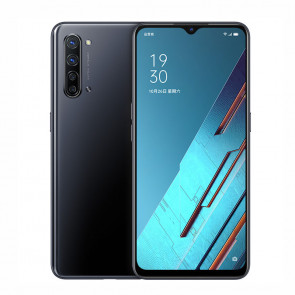5G Devices
What is 5G?
5G (fifth-generation wireless) is the latest iteration of cellular technology, and the upcoming evolution of wireless 4G LTE, which is mostly used today for wireless mobile networks. 5G is engineered to greatly increase the speed and responsiveness of wireless networks. It offers incredibly fast wireless communication that can be used to transmit all sorts of data at rates as high as 20 Gbps by some estimates -- exceeding wireline network speeds -- as well as offer latency of 1 ms or lower for uses that require real-time feedback. 5G networks offer more reliable connections on smartphones and other devices than ever before. The networks will help power a huge rise in the Internet of Things technology, providing the infrastructure needed to carry huge amounts of data, allowing for a smarter and more connected world.
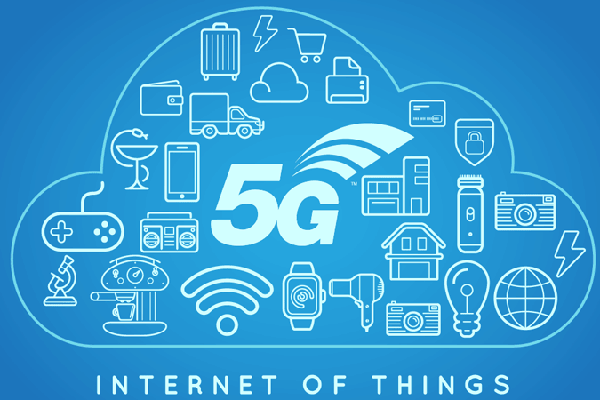
Apart from fast mobile networks, 5G will also be used to deliver internet to your home. Its speed is also suited for upcoming technologies, such as providing a continuous stream of data required for many self-driving-car systems. With development well underway, 5G networks are expected to launch across the world by 2020, working alongside existing 3G and 4G technology to provide speedier connections that stay online no matter where you are.
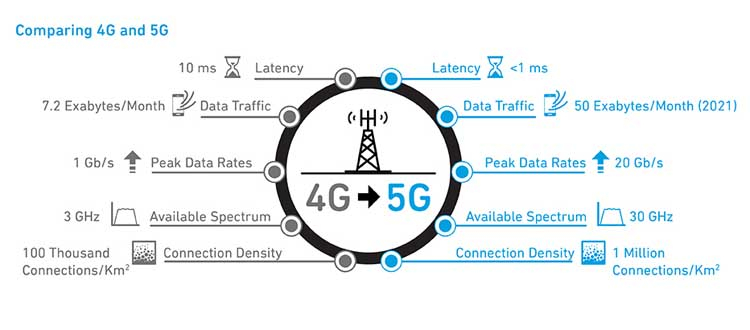
What will we benefit from 5G?
- > Faster download and upload speeds
- > Smoother streaming of online content
- > Higher-quality voice and video calls
- > More reliable mobile connections
- > Greater number of connected IoT devices
- > An expansion of advanced technologies - including self-driving cars and smart cities
How fast could the 5G reach?
It’s still not exactly known how much faster 5G will be than 4G, as much of the technology is still under development. Most estimates expect the average speed of 5G networks to reach 10Gb/s, and some even think transfer rates could reach a whopping 800Gb/s. This would mean that users could download a full-length HD quality film in a matter of seconds and that downloading and installing software upgrades would be completed much faster than today.
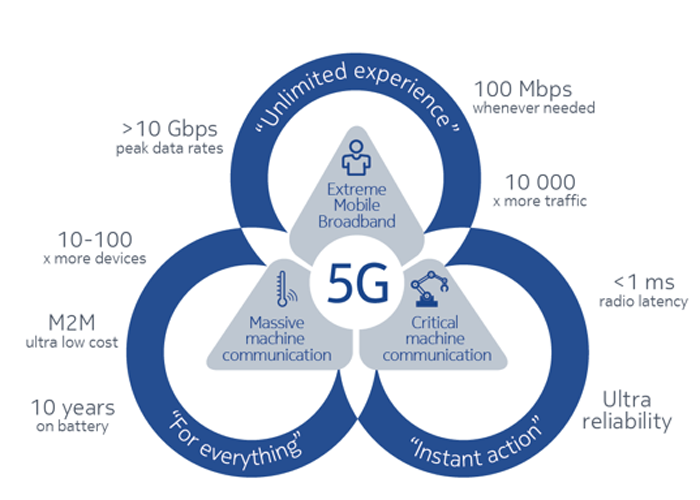
How does 5G Work?
Wireless networks are composed of cell sites divided into sectors that send data through radio waves. Fourth-generation (4G) Long-Term Evolution (LTE) wireless technology provides the foundation for 5G. Unlike 4G, which requires large, high-power cell towers to radiate signals over longer distances, 5G wireless signals will be transmitted via large numbers of small cell stations located in places like light poles or building roofs. The use of multiple small cells is necessary because the millimeter wave spectrum -- the band of spectrum between 30 GHz and 300 GHz that 5G relies on to generate high speeds -- can only travel over short distances and is subject to interference from weather and physical obstacles, like buildings.
Previous generations of wireless technology have used lower-frequency bands of spectrum. To offset millimeter wave challenges relating to distance and interference, the wireless industry is also considering the use of lower-frequency spectrum for 5G networks so network operators could use the spectrum they already own to build out their new networks. Lower-frequency spectrum reaches greater distances but has lower speed and capacity than millimeter wave, however.
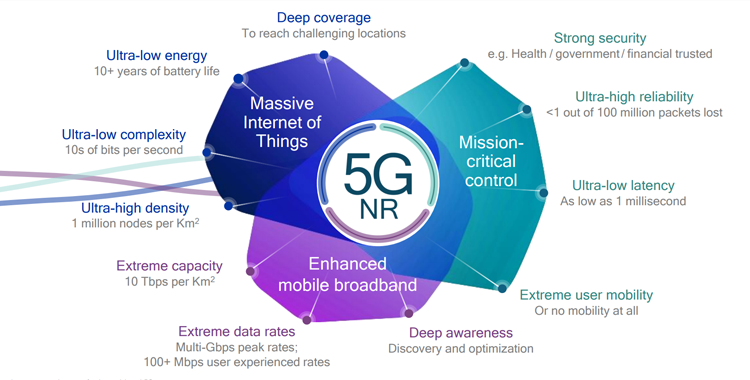
5G Frequency Bands
On 21st December 2017, in Lisbon, the 3GPP TSG RAN Plenary Meeting successfully approved first implementable 5G NR specification. The completion of the first 5G NR standard enables the full-scale development of 5G NR for large-scale trials and commercial deployments as early as in 2019. This first specification was completed as part of 3GPP Release 15.
As per 3GPP release 15, the frequency bands for 5G NR have been designated and TS 38.104 section 5.2 provides the list of bands in which 5G NR can operate. The specification defines the frequency bands as FR1 and FR2.
|
Band |
Frequency |
Type |
|
FR1 |
450 to 6000 MHz |
Sub-6 GHz |
|
FR2 |
24250 to 52600 MHz |
mm-Wave |
FR1 and FR2 are the basic frequency band classifications for 5G-NR. These can be further classified into three bands:
- Frequency Division Duplex Bands (FDD)
- Time Division Duplex Bands (TDD)
- Supplementary Bands: Supplementary Downlink Bands (SDL) & Supplementary Uplink Bands (SUL)
FR1 FDD (Frequency Division Duplex) Frequency Bands for 5G-New Radio
|
5G NR Band |
Uplink Frequency |
Downlink Frequency |
Bandwidth |
|
n1 |
1920 -1989 MHz |
2110 - 2170 MHz |
60 MHz |
|
n2 |
1850 - 1910 MHz |
1930 - 1990 MHz |
60 MHz |
|
n3 |
1710 - 1785 MHz |
1805 - 1880 MHz |
75 MHz |
|
n5 |
824 - 849 MHz |
869 - 894 MHz |
25 MHz |
|
n7 |
2500 - 2670 MHz |
2620 - 2690 MHz |
70 MHz |
|
n8 |
880 - 915 MHz |
925 - 960 MHz |
35 MHz |
|
n20 |
832 - 862 MHz |
791 - 821 MHz |
30 MHz |
|
n28 |
703 - 748 MHz |
758 - 803 MHz |
45 MHz |
|
n66 |
1710 - 1780 MHz |
2110 - 2200 MHz |
90 MHz |
|
n70 |
1695 - 1710 MHz |
1995 - 2020 MHz |
15/25 MHz |
|
n71 |
663 - 698 MHz |
617 - 652 MHz |
35 MHz |
|
n74 |
1427 - 1470 MHz |
1475 - 1518 MHz |
43 MHz |
FR1 TDD (Time Division Duplex) Frequency Bands for 5G-New Radio
|
5G NR Band |
Uplink Frequency |
Downlink Frequency |
Bandwidth |
|
n38 |
2570 - 2620 MHz |
2570 - 2620 MHz |
50 MHz |
|
n41 |
2469 - 2690 MHz |
2496 - 2690 MHz |
194 MHz |
|
n50 |
1431 - 1517 MHz |
1432 - 1517 MHz |
85 MHz |
|
n51 |
1427 - 1432 MHz |
1427 - 1432 MHz |
5 MHz |
|
n77 |
3300 - 4200 MHz |
3300 - 4200 MHz |
900 MHz |
|
n78 |
3300 - 3800 MHz |
3300 - 3800 MHz |
500 MHz |
|
n79 |
4400 - 5000 MHz |
4400 - 5000 MHz |
600 MHz |
FR1 Supplementary Downlink Bands (SDL) & Supplementary Uplink Bands (SUL) for 5G-New Radio
|
5G NR Band |
Uplink Frequency |
Downlink Frequency |
Bandwidth |
Type |
|
n75 |
- |
1432 - 1517 MHz |
85 MHz |
SDL |
|
n76 |
- |
1427 - 1432 MHz |
5 MHz |
SDL |
|
n80 |
1710 - 1785 MHz |
- |
75 MHz |
SUL |
|
n81 |
880 - 915 MHz |
- |
35 MHz |
SUL |
|
n82 |
832 - 862 MHz |
- |
30 MHz |
SUL |
|
n83 |
703 - 748 MHz |
- |
45 MHz |
SUL |
|
n84 |
1920 - 1980 MHz |
- |
60 MHz |
SUL |
5G NR Frequency Bands in FR2
|
5G NR Band |
Band Alias |
Uplink Band |
Downlink Band |
Bandwidth |
Type |
|
n257 |
28 GHz |
26.5 - 29.5 GHz |
26.5 - 29.5 GHz |
3 GHz |
TDD |
|
n258 |
26 GHz |
24.250 - 27.5 GHz |
24.250 - 27.5 GHz |
3.250 GHz |
TDD |
|
n260 |
39 GHz |
37 - 40 GHz |
37 - 40 GHz |
3 GHz |
TDD |
5G Applications
5G’s speed and reduced latency have the potential to transform entire industries.
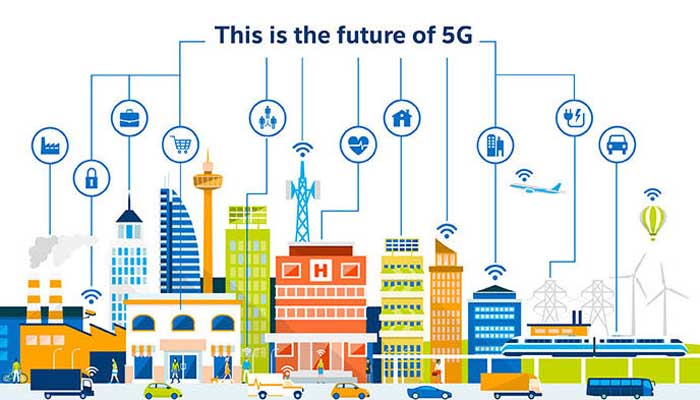
Cars
Connected cars are a key growth driver. Futurists predict that the self-driving vehicles of the future will exchange cloud management info, sensor data, and multimedia content with one another over low-latency networks. According to ABI Research, 67 million automotive 5G vehicle subscriptions will be active, three million of which will be low latency connections mainly deployed in autonomous cars.
IoT
According to Asha Keddy, general manager of mobile standards for advance tech at Intel, 5G will be the first network designed with the Internet of Things (IoT) in mind. “These next-generation networks and standards will need to solve a more complex challenge of combining communications and computing together,” Keddy told Quartz in an interview ahead of the 2017 Mobile World Congress. “With 5G, we’ll see computing capabilities getting fused with communications everywhere, so trillions of things like wearable devices don’t have to worry about computing power because the network can do any processing needed.” Eventually, everything from wearables to internet-connected things such as washing machines, smart meters, traffic cameras, and even trees with tiny sensors could be connected.
Virtual reality and augmented reality
5G could bring about advances in virtual reality and streaming video. Sprint recently demonstrated streaming wireless VR at the Copa America soccer tournament, and Huawei showed a demo of 360-degree video streamed live from a 5G network.
Cloud-powered apps
Remote storage and web apps stand to benefit from 5G. “The cloud becomes an infinite extension of your phone’s storage,” El-Kadi said. “You never have to worry about running out of photo space.”
In addition to additional phone storage, you may see a significant difference in mobile hardware design overall. With 5G many of the computing tasks completed on your device can be moved to the network. Since the devices will not require the same computing capabilities, we may see so-called “dummy phones” with minimal hardware using the network to complete tasks. The transfer of power from the device to the network also means that your cell phone may have greater longevity as it will not necessarily require incremental hardware improvements to keep pace.
-
Samsung SFG-D0100 5G Home Router
* Samsung first 5G Home Router
* millimeter wave-based wireless router
* 2 X 2 MIMO, 64 antennas
* Support 27.5GHz to 28.35GHz millimeter wave
* DL 1.4Gbps/UL 600Mbps
Learn More -
Netgear Nighthawk M5 Fusion MR5000 5G Mobile Hotspot
* World's first 5G Mobile Hotspot
* Support 5G Band: N260 (39 GHz)
* Based Qualcomm Snapdragon X50 5G Modem
* LTE Cat20, LTE-A 5-band Carrier Aggregation, 4x4 MIMO, 256QAM
* Download Speed up to 5Gbps
* 5G enabled with LTE fallback
* Support up to 20 WiFi-enabled devices
* Large battery of 5040mAh
Learn More -
Quectel EM20 LTE-A Cat20 M.2 Module
* LTE-A Cat 20 Module for M2M and IoT Applications
* Worldwide LTE-A and UMTS/HSPA+ coverage
* Support DL 7x carrier aggregation and 256QAM
* LTE DL 2Gbit/s, UL 150Mbps
* GNSS Standard: GPS, GLONASS, BeiDou, Galileo
Learn More -
Netgear Nighthawk M2 MR2100 4G Mobile Hotspot(Unlocked)
* LTE Category 20
* DL 2Gbps/UL 150Mbps
* 4 x 4 MIMO and 5CA
* Two connectors for external antennas
Learn MoreRegular Price: £799.20
Special Price £559.20
-
D-Link DWR-2010 5G NR Enhanced Router/Gateway
* World's first 5G home gateway
* 4 external antennas for LTE/5G NR
* Whole home coverage with D-Link Wi-Fi Mesh
* AC2600 Dual Band Wi-Fi (800 + 1732 Mbps) with MU-MIMO
* 5 Ethernet Ports
Learn More -
Inseego R1000 5G Home Router
* World's first 5G Home Router
* 5G NR-Compatible Gateway
* For Version 5G Home
* 4 x 4 MIMO and VoLTE available
Learn More -
Samsung Galaxy S10 5G SM-G9730
* 6.1 inches, 1440 x 3040 pixels display resolution
* Android 9.0 (Pie),Qualcomm SDM855 Snapdragon 855 or Exynos 9820 Octa chipset
* 512 GB, 8 GB RAM / 128 GB, 6 GB RAM
* Triple main camera and single front camera
* Wi-Fi 802.11 a/b/g/n/ac/ax, dual-band, Wi-Fi Direct, hotspot
* Non-removable Li-Ion 3400 mAh battery
Learn More -
Samsung Galaxy S10+ SM-G9750
* Samsung 4G Mobile Phone
* 6.3 inches, 1440 x 3040 pixels display resolution
* Android 9.0 (Pie),Qualcomm SDM855 Snapdragon 855 or Exynos 9820 Octa chipset
* 1 TB, 12 GB RAM / 512 GB, 8 GB RAM / 128 GB, 6 GB RAM
* Triple main camera and single front camera
* Wi-Fi 802.11 a/b/g/n/ac/ax, dual-band, Wi-Fi Direct, hotspot
* Non-removable Li-Ion 4100 mAh battery
Learn More -
LG G8 ThinQ 5G Phone
* LG 5G Mobile Phone
* 6.1 inches, 1440 x 3120 pixels display resolution
* Android 9.0 (Pie),Qualcomm SDM855 Snapdragon 855 Chipset
* 256 GB, 8GB RAM or 128 GB, 6GB RAM
* Dual main camera and dual front camera
* Wi-Fi 802.11 a/b/g/n/ac, dual-band, Wi-Fi Direct, DLNA, hotspot
* Non-removable Li-Po 3500 mAh battery
Learn More£799.20 -
HTC U13 5G Mobile Cell Phone
* HTC 5G Cell Phone
* 6.2” Inches Super AMOLED Full Touch Screen Display
* Chipset: Qualcomm Snapdragon 855
* Non-removable Li-Polymer 6500 mAh battery
* Triple main camera and dual front camera
Learn More -
Samsung Galaxy Fold SM-F9000
* World’s first Dynamic AMOLED Infinity Flex Display
* 7.3” QXGA+ Dynamic AMOLED Main display
* 7nm 64-bit Octa-core processor
* Rear triple camera + Dual front camera + Cover Camera
* 4,380mAh Battery and support wired and wireless fast charging
Learn More£2,719.20 -
Huawei Mate X 5G Foldable Smartphone
* Huawei First Foldable Smartphone
* Two 5.9-inch IPS LCD screens
* 1440 x 2560 pixels display resolution
* 6GB RAM + 512GB ROM
* Dual primary camera, single front camera
* Non-removable Li-Po 4000mAh battery
Learn More -
Xiaomi Mi Mix 3 5G
* Xiaomi first 5G smartphone
* Qualcomm SDM855 Snapdragon 855 (7 nm) chipset
* 6.39 inches Super AMOLED capacitive touchscreen, 1080 x 2340 pixels display resolution
* Dual(12MP + 12MP)Main Camera and Dual Selfie Camera(24MP + 2MP)
* Wi-Fi 802.11 a/b/g/n/ac, dual-band, WiFi Direct, hotspot
* Non-removable Li-Po 3800 mAh battery
Learn More£639.20 -
Huawei 5G CPE Pro (H112-372 and H112-370)
* Huawei first commercial 5G Router
* Based on world’s first 5G multimode modem chipset Balong 5000
* Peak Download Speed up to 3.2Gbps
* Wi-Fi 802.11 a/b/g/n/ac/ax, dual-band(2.4 GHz and 5 GHz)
* Telecommunication Standard: 3GPP Release 15
* Support 5G Frequency Band: n41/n77/n78/n79
* Two variant models: H112-372 and H112-370
Learn More -
Huawei 5G Mobile WiFi Hotspot
* Huawei 5G mobile WiFi Router
* Huawei Balong 5000 chipset inside, 5G/4G dual model
* Super fast 5G wireless speeds to enjoy online 8K video smoothly
* Compliant with 3GPP Release 15
* Embedded large battery to work for long time
Learn More -
HTC 5G Hub (Unlocked)
* Connect Up to 20 Devices
* All-Day Battery
* Qualcomm® Snapdragon™ 5G chipset
* Plug & Play Entertainment Hub
* Easy Corporate VPN Configuration
* Unlocked for global use
Learn More -
5G External Antenna
* Frequency Range: 698 - 4800MHz
* Impedance: 50Ω
* Gain: 10dBi
* Polarization: Vertical
* VSWR: ≤1.5
Learn More -
VIVO NEX 3 5G
* VIVO 5G Smartphone/Cell Phone
* Android 9/Funtouch OS, 6.89 inch multi-touch AMOLED capacitive screen
* Capacity: 8GB RAM + 256GB ROM
* Camera: Rear 12MP and Front 8MP
* Non-removable battery 4000mAh
* Support 5G NR Sub-6GHz
Learn More -
OPPO Reno 3 5G
* OPPO 5G Smartphone/Cell Phone
* Android 10/ColorOS 7, 6.4 inch AMOLED capacitive touchscreen
* Chipset: Mediatek MT6885Z Dimensity 1000L (7nm)
* Capacity: 8GB RAM + 128GB ROM, 12GB RAM + 128GB ROM
* Camera: Rear 64MP + 8MP + 2MP + 2MP and Front 32MP
* Non-removable battery 4025mAh
Learn More -
Huawei Mate 20 X 5G
* Huawei 5G Smartphone/Cell Phone
* Android 9/EMUI 9.0, 7.2 inch multi-touch AMOLED capacitive screen
* Capacity: 8GB RAM + 256GB ROM
* Camera: Rear 40MP + 20MP + 8MP and Front 24MP
* Non-removable battery 4200mAh
Learn MoreRegular Price: £1,039.20
Special Price £799.20

